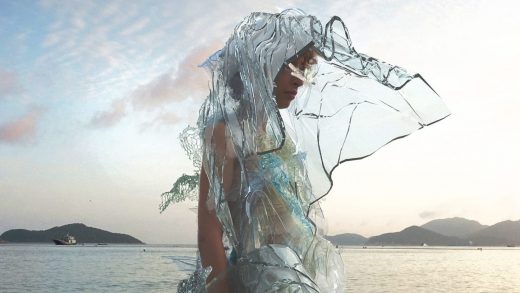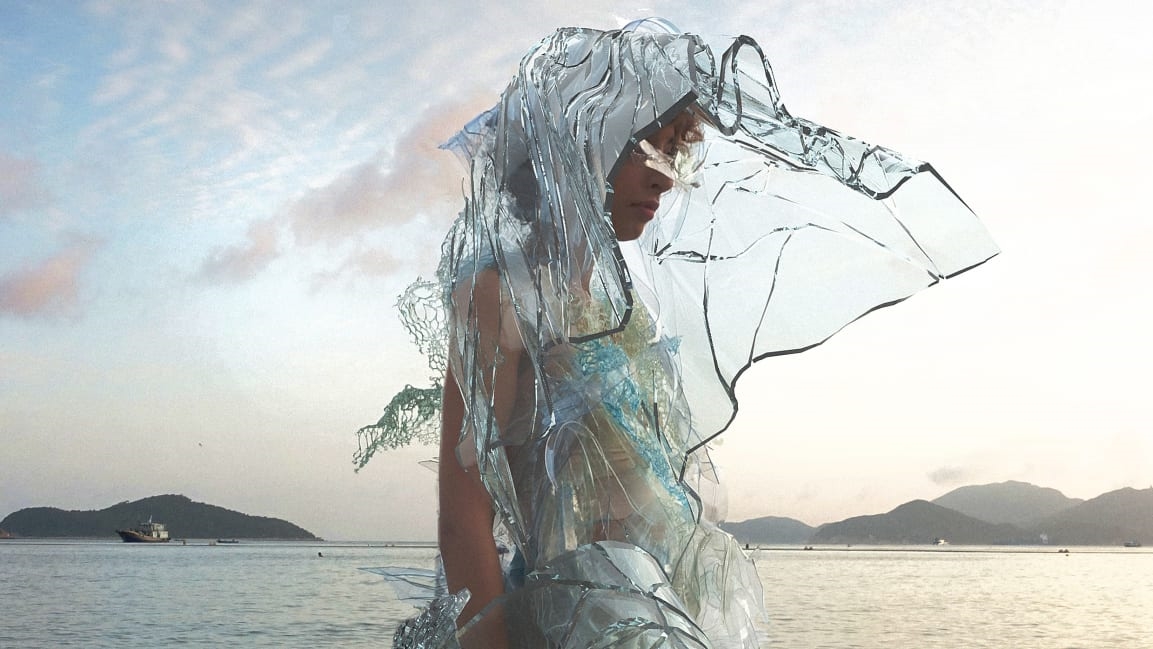The clothing of the future completely dissolves after use
Fashion is built on cyclical trends. As Heidi Klum famously said on Project Runway, “One day you’re in. And the next day you’re out.” But that also makes the industry inherently wasteful. So what if instead of sending old clothes to the landfill, you could dissolve them?
Scarlett Yang, a recent graduate from acclaimed London design school Central Saint Martins, developed a dress that does just that for her graduate collection. Yang designed an ethereal, sculptural high-fashion dress made from silk cocoon protein and algae extract. The textile is completely biodegradable. While it’s just a conceptual project for now, it points to the possibility of a fashion lifecycle in which garments are intentionally designed to be sustainable.
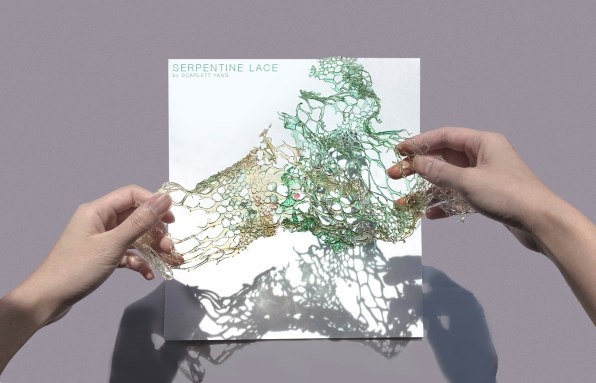
Algae has made a few recent appearances as a replacement for plastic. A California-based lab called Algenesis developed a biodegradable, algae-based polyurethane that could be used in flip-flops, while interdisciplinary designer Charlotte McCurdy developed a translucent raincoat made out of the biodegradable material in 2019. All of these developments point to a recognition among emerging designers that things need to change. “The vast majority of the textile on the market is not recyclable, that means we as young generation fashion graduates/students are also contributing to the pollution issues if we still do things the traditional way,” says Yang. “Like many of my peers and tutors, I cannot ignore the fact the we need changes.”
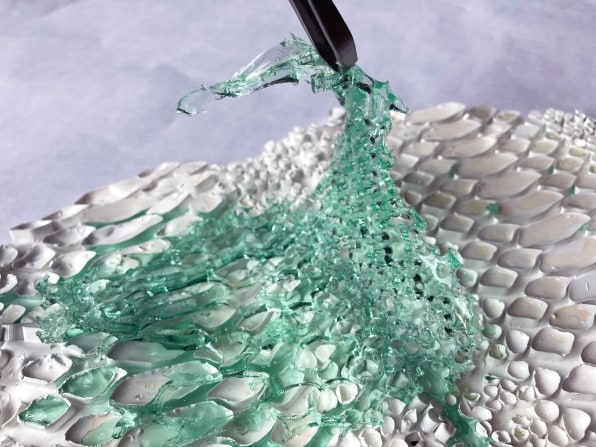
So Yang began researching bio materials as an alternative, eventually landing on algae extract and silk cocoon protein, which waterproofs the garment (up to a point). Yang used 3D modeling to draft hundreds of silhouettes before landing on the final product.
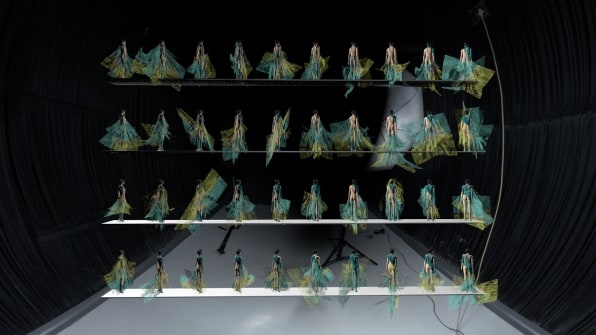
To create the “textile,” Yang pours the liquid mixture onto a 3D mold to incubate. The resulting stiffness of the fabric changes based on the ratio of algae extract and cocoon protein, as well as the surrounding temperature and humidity. And then there’s the breakdown. The material can dissolve at different rates, depending on the temperature and pH of the water you place it in: It can completely dissolve in as little as 15 minutes, or in up to two hours. The shape of the mold and thickness of the material is a factor too (a fine mesh versus a large open weave, for instance), though a lesser one, according to Yang.

While there’s existing haute couture with similar aqueous inspiration, there’s plenty of room for established designers to adopt additional sustainability practices. Designer Iris Van Herpen released her Crystallization collection 10 years ago, which included looks where the model appears to have a splash of water surrounding her. The look was a stunning feat of design, but it’s made out of plastic. In 2020, we’re ready for sustainable alternatives.
So can we expect to see eco-friendly, algae-based conceptual design hit the world of high fashion? While Yang doesn’t have a set date to send her garments down an IRL runway, she created a collection of digital garments with 3D material simulation, which will be available in the near future to purchase for use in augmented reality and CGI.
Now that might be the most 2020 application yet.
(38)

